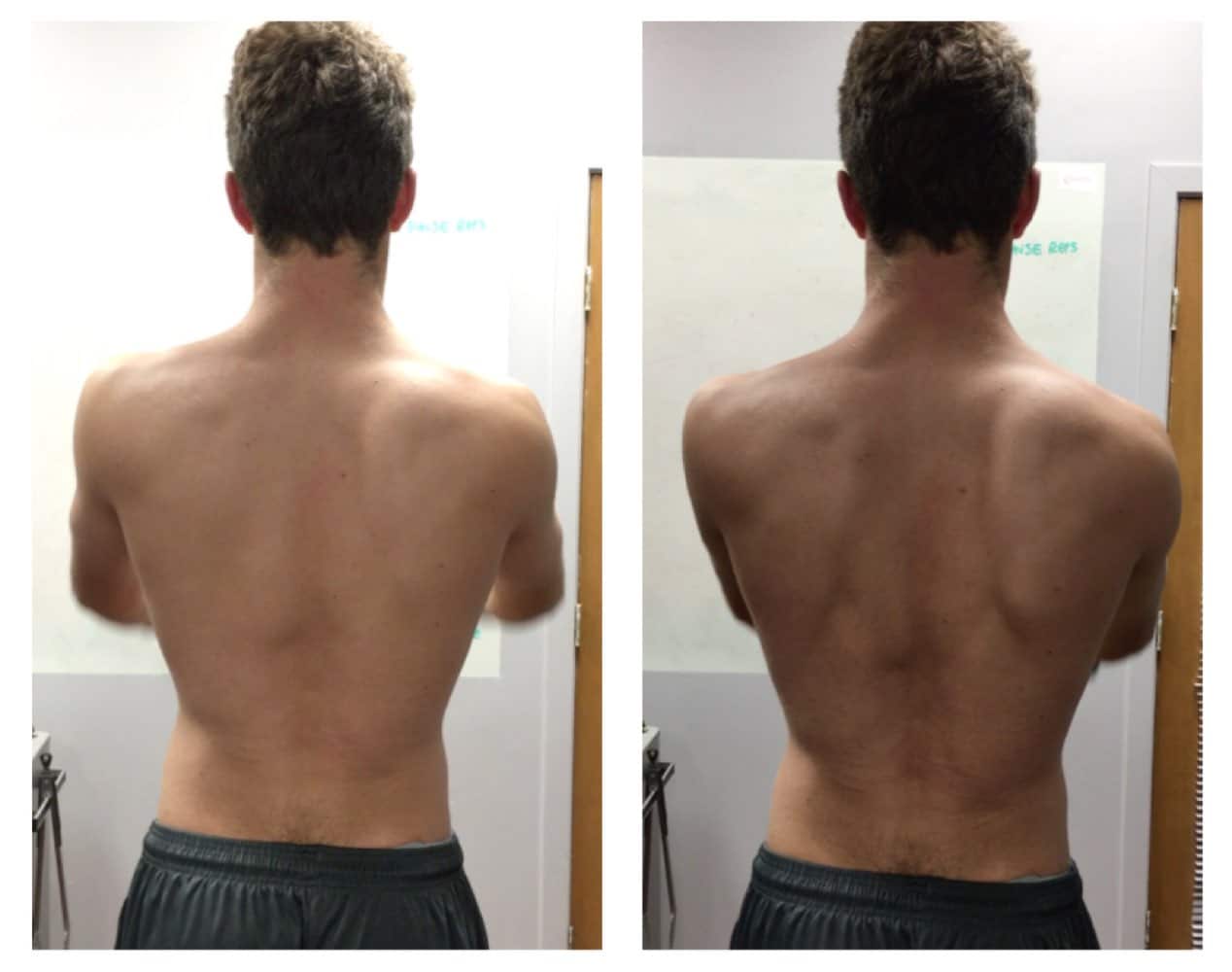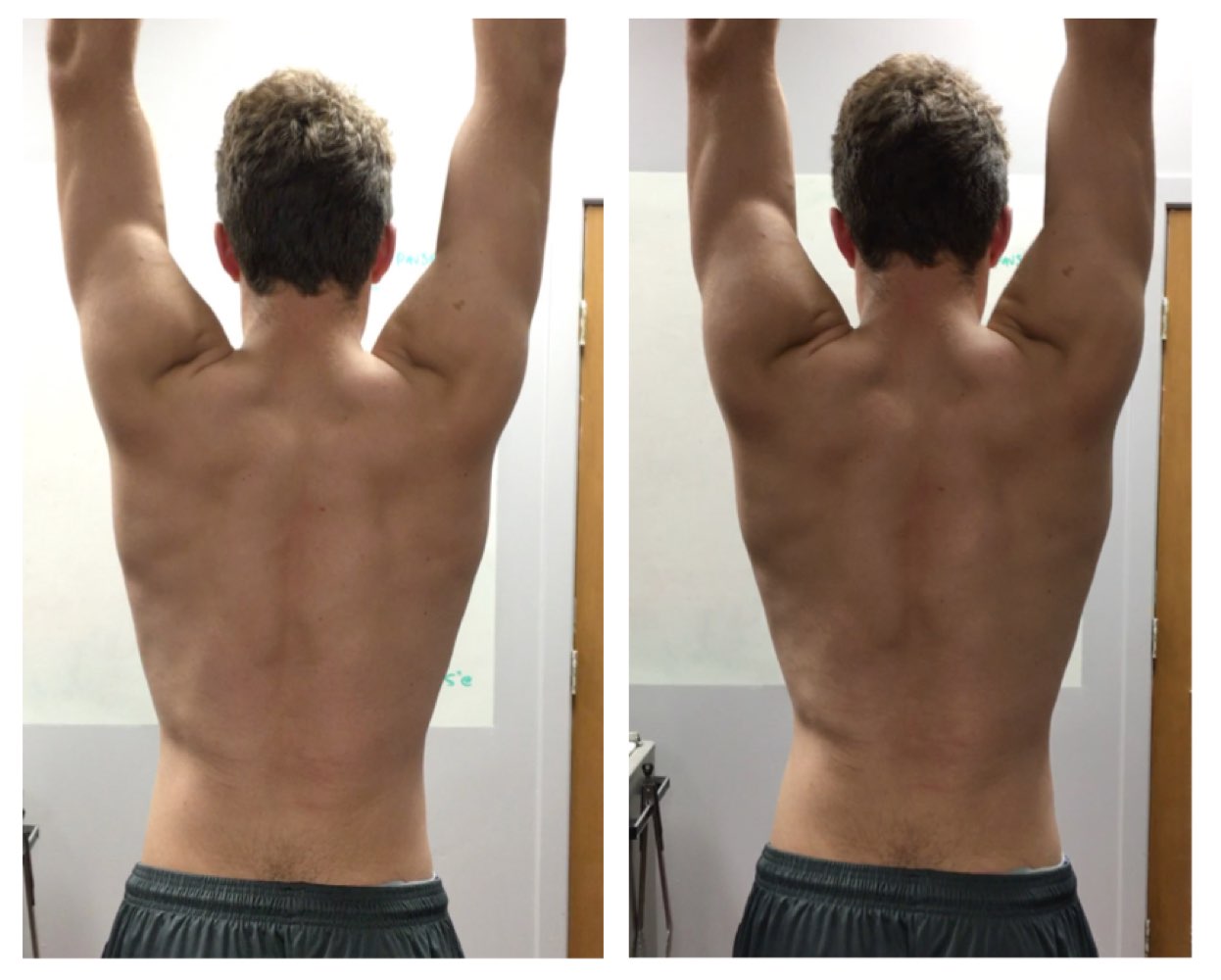This article was originally published by Mike Reinold. View the original article by clicking here.
A common part of my examinations includes assessing for abnormal scapular position and movement, which can simply be defined as scapular dyskinesis. Scapular dyskinesis has long been theorized to predispose people to shoulder injuries, although the evidence has been conflicting.
Whenever data is conflicting in research articles, you need to closely scrutinize the methodology. One particular flaw that I have noticed in some studies looking at the role of scapular dyskinesis in shoulder dysfunction has involved how the assess and define scapular dyskinesis.
Like anything else, when someone has a significant issue with scapular dyskinesis it is very apparent and obvious on examination. But being able to detect subtle alterations in the movement of the scapula may be more clinically relevant. There’s a big difference between someone that has a large amount of winging while concentrically elevating their arm versus someone that has a mild issues with control of the scapula while eccentrically lowering their arm.
Most people will not have a large winging of their scapula while elevating their arm. This represents a more significant issue, such as a nerve injury. However, a mild amount of scapular muscle weakness can change the way the scapula moves and make it difficult to control while lowering.
A Simple Test for Scapular Dyskinesis
One of the simplest assessments you can perform for scapular dyskinesis is watching the scapula move during shoulder flexion. Performing visual assessment of the scapula during shoulder flexion has been shown to be a reliable and valid way to assess for abnormal scapular movement.
That’s it. Crazy, right? That simple! Yet, I’m still amazed at how many times people tell me no one has ever looked at how well their scapula moves with their shirt off.
However, there is one little tweak you MUST do when performing this assessment…
You have to use a weight in their hand!
Here is a great example of someone’s scapular dyskinesis when performing shoulder flexion with and without an external load. The photo on the left uses no weight, while the photo on the right uses a 4 pound dumbbell:

As you can see, the image on the right shows a striking increase in scapular dyskinesis. I was skeptical after watching him lift his arm without weight in the photo on the left, however, everything became very clear when adding a light weight to the shoulder flexion movement. With just a light load, the ability to prevent the scapula from winging while eccentrically lowering the arm becomes much more challenging.
I should also note that there was really no significant difference in scapular control or movement during the concentric portion of the motion raising his arms overhead:

This person doesn’t have a significant issue or nerve damage, he simply just needs some strengthening of his scapular muscles. But if you didn’t observe his scapula with his shirt off or with a dumbbell in his hand, you may have missed it!
How to Assess for Scapular Dyskinesis
In this month’s Inner Circle webinar, I am going to show you a live demonstration of how I assess scapular position and movement. I’ve had past talks on how to assess scapular position and how to treat scapular dyskinesis, however I want to put it all together with a demonstration of exactly how I perform a full scapular movement assessment and go over things I am looking for during the examination.
